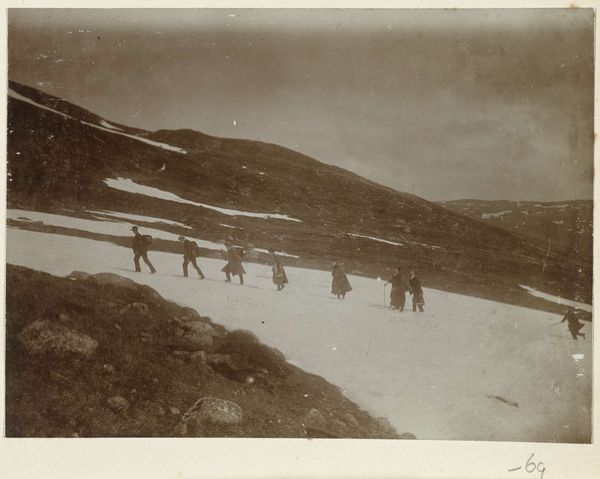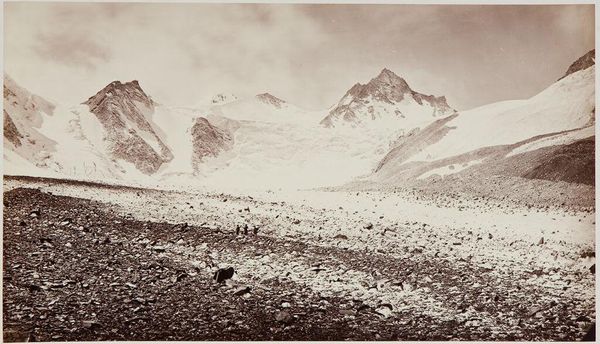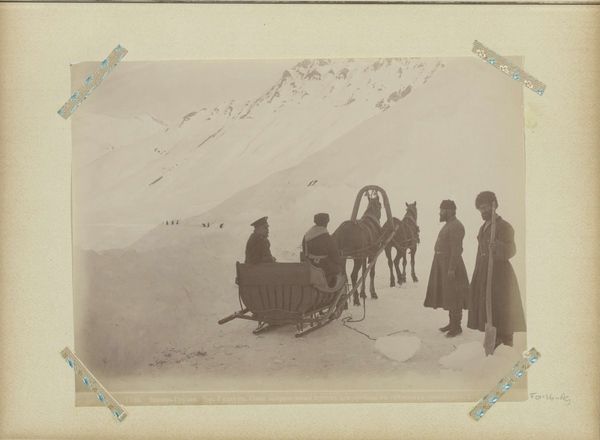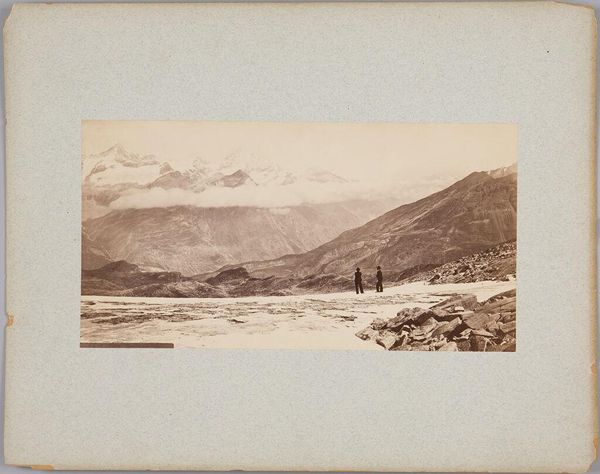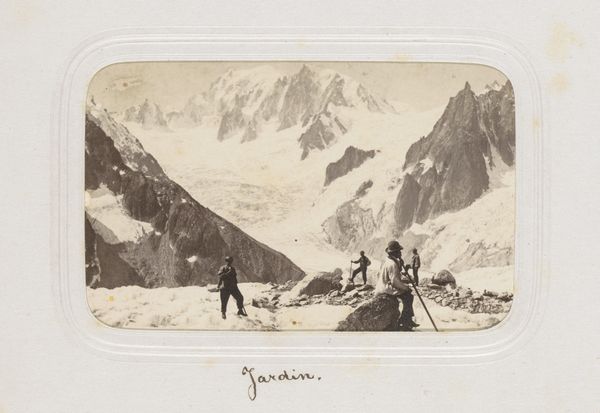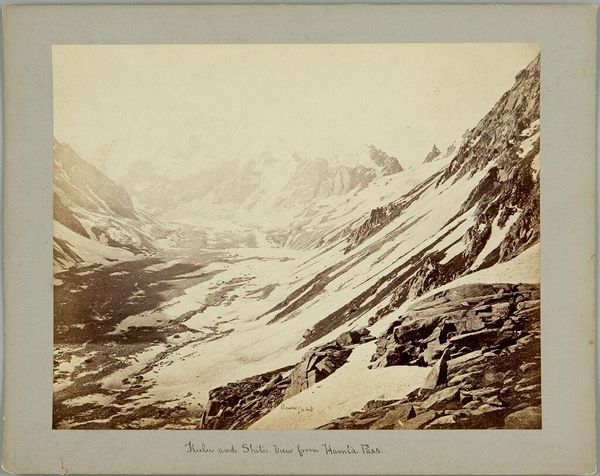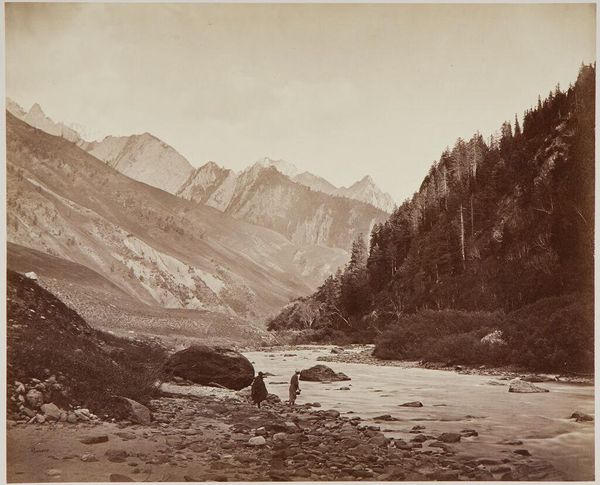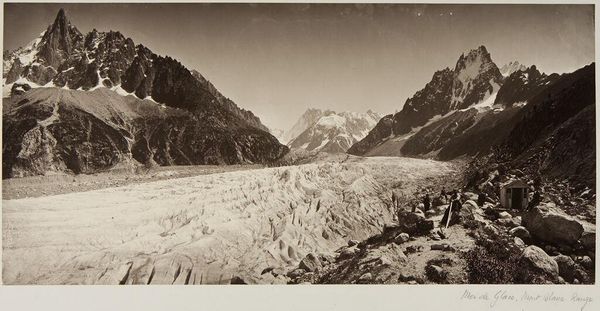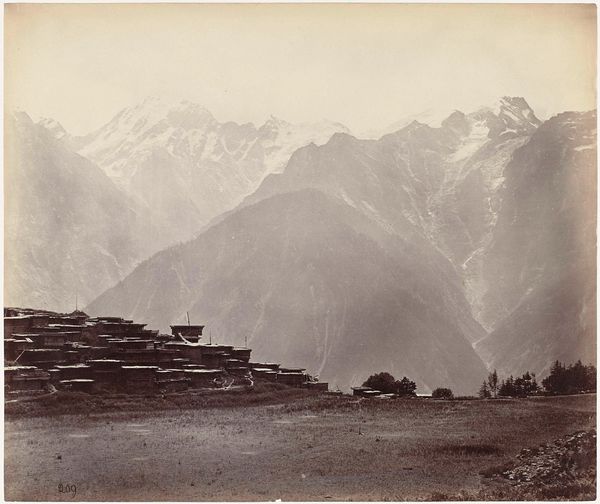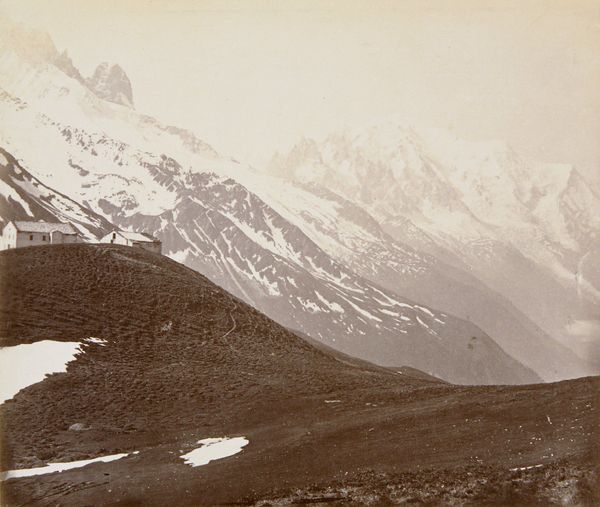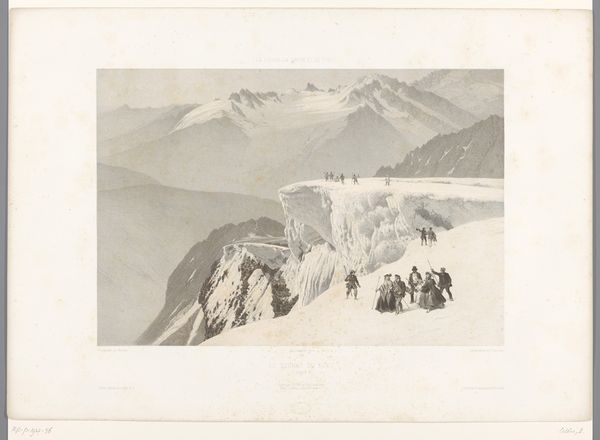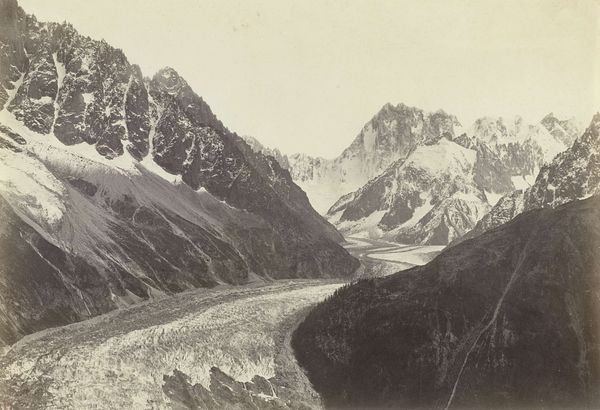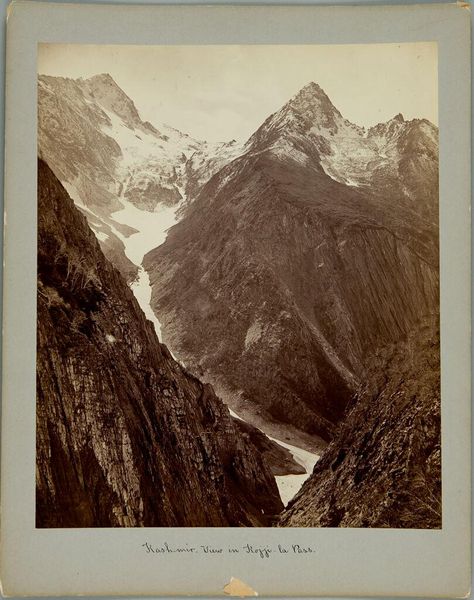
Dimensions: height 107 mm, width 160 mm
Copyright: Rijks Museum: Open Domain
Editor: So this is 'Wandelaars steken het Mer de Glace over bij Chamonix', a gelatin silver print by Auguste Garcin, predating 1880. It shows a group crossing a glacier; the figures seem almost tiny compared to the landscape. What strikes you about it? Curator: I see a photograph that reveals a particular mode of 19th-century tourism intertwined with emerging industrial practices. Notice how this expedition is being documented, almost commodified. The labor involved, from producing the photographic materials to guiding these tourists, becomes part of the experience, packaged and sold. Editor: I hadn't thought about it in terms of labor... Could you elaborate on that a bit? Curator: Consider the gelatin silver print itself. It wasn't conjured from thin air, it depended on factories producing the necessary chemicals, the infrastructure to get it here and the photographers to set up their studio and venture to dangerous, difficult to reach locations, producing these views to fulfill demand for tourism and its memory keeping. The act of traversing this landscape became, in part, a spectacle, a consumable image destined for someone's album or perhaps a commercially reproduced souvenir. Even their clothing represents significant material investment! Editor: That makes so much sense! Seeing it now, this photo isn’t just a simple landscape; it captures a moment where nature, labor, and early industrial consumerism meet. So, this ties into Romanticism through tourism but critiques the way it’s consumed? Curator: Precisely. This photograph, as a manufactured object and an image of curated experience, reveals how even our encounters with sublime nature were already mediated and marketed in a nascent industrial age. What appears "natural" here required very artificial processes. Editor: Wow, that gives me a whole new perspective on landscape photography. I never would have looked at it this way! Curator: Examining the photograph in this way forces us to challenge idealized views of both nature and art itself.
Comments
No comments
Be the first to comment and join the conversation on the ultimate creative platform.
